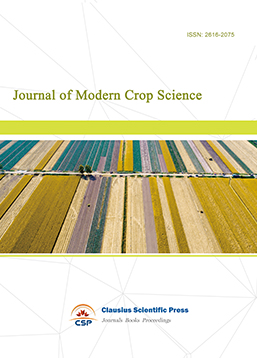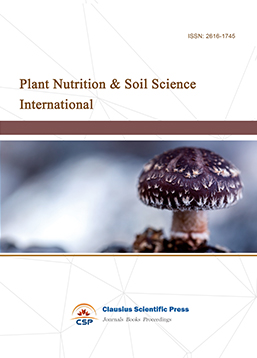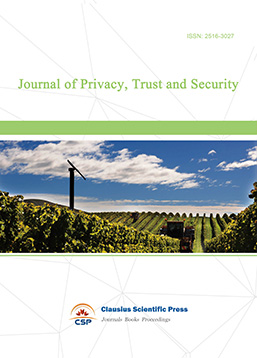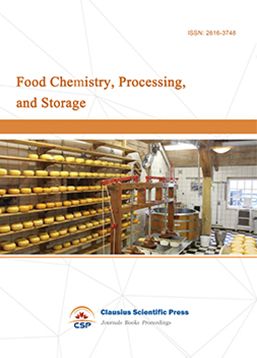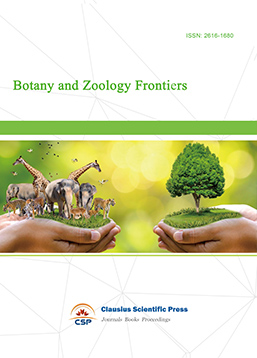Risk Evaluation of Pesticide Residue in Strawberries
DOI: 10.23977/afshn.2023.050102 | Downloads: 43 | Views: 1788
Author(s)
Bing Luo 1, Fachun Xiang 2, Yan Ren 1
Affiliation(s)
1 Mianyang City College, Mianyang, Sichuan, 621000, China
2 Mianyang City Agricultural Products Quality Safety Inspection and Testing Center, Mianyang, Sichuan, 621000, China
Corresponding Author
Bing LuoABSTRACT
In order to identify the types of pesticide residues and the maximum residue limit (MRLs) values in strawberries, the national estimated daily intake and short-term intake were used to assess the risk of pesticide residues in different populations, respectively. Meanwhile, the existing pesticide MRLs standard was used to evaluate the consumer protection level, and the risk ranking matrix was used to rank the risk of detected pesticides.The results showed that a total of 14 pesticides in all strawberries were detected with a detection rate of 4.5%~72.7%; of these, 1 exceeded their MRLs, which was found in 2.3% of the samples. However, there are pesticides that are not registered in Strawberries production but are used.In different age groups, the risk of chronic and acute dietary intake of Strawberries pesticide residues is less than 100%, and the risk is acceptable. The consumer protection level for chronic dietary risk (CPLc) of the existing pesticide MRLs for different age groups was 6.2~7254.4. It is greater than 1, so the risk protection has reached an acceptable level. The consumer protection level for acute dietary risk (CPLa) of the existing pesticide MRLs for different age groups was 0.3~1290.0. However, the risk is unacceptable. The CPLa of procymidone is less than 1 among children aged 2~4 years, women aged 18~30 years and 60~70 years. Moreover, the CPLa of pyraclostrobine ether ester is less than 1 among children aged 2~4 years. It is suggested that the MRL of procymidone and pyraclostrobine ether ester in Strawberries should be revised to 3.5 mg / kg and 1 mg / kg. According to the results of risk assessment, more attention should be focus on the pesticide residues of procymidone, acetamiprid, boscalid, pyraclostrobine, bifenazate, carbendazim, Imidacloprid, difenoconazole, triadimefon and chlorothalonil in Strawberries.
KEYWORDS
Strawberries, pesticide, risk assessment, MRLsCITE THIS PAPER
Bing Luo, Fachun Xiang, Yan Ren, Risk Evaluation of Pesticide Residue in Strawberries. Advances in Food Science and Human Nutrition (2023) Vol.5: 14-24. DOI: http://dx.doi.org/10.23977/afshn.2023.050102.
REFERENCES
[1] Wang Zhihai. Main insect pests and safety drug control of strawberries in greenhouse. Yantai Fruit, 2021 (03): 50-51.
[2] Li Xueying. Common diseases and pests of strawberries cultivated in open air and their control techniques. South China Agriculture, 2021, 15 (17): 38-39.
[3] Yi Yuanjun, Qin Yan, Zhao Yongkang, et al. Production Suggestion of Green Control Technology on Strawberry Diseases and Pests in Sichuan Province. Horticulture and Seedling, 2021, 41 (11): 56-57.
[4] Qian Yongzhong, Li Yun, Agricultural Product Quality and Safety Risk Assessment: Principles, Methods and Applications. Beijing: Standards Press of China, 2007: 20-61.
[5] Yang G L, Wang W, Liang S M, et al, Pesticide residues in bayberry (Myrica rubra) and probabilistic risk assessment for consumers in Zhejiang, China. Journal of Integrative Agriculture, 2017, 16 (009): 2101-2109.
[6] Sieke C, Probabilistic cumulative dietary risk assessment of pesticide residues in foods for the German population based on food monitoring data from 2009 to 2014. Food and Chemical Toxicology, 2018, 121:396-403.
[7] Wang Z, Di S, Qi P, et al, Dissipation, accumulation and risk assessment of fungicides after repeated spraying on greenhouse strawberry. Science of the Total Environment, 2021, 758 (12): 144067.
[8] He Jie, Liu Wenfeng, Hu Chengcheng, et al. Risk Assessment of Pesticide Residues via Dietary Intake of Tomatoes from Qiandongnan, Guizhou. Food Science, 2019, 40 (1): 7.
[9] Ye Mengliang. Study on the evaluation of pesticide residues and dietary exposure in apple. Beijing: Chinese Academy of Agricultural Sciences, 2016.
[10] Fan Jingbo, Risk Assessment of Pesticide Residues and Heavy Metal Contaminants in Tomato. Chinese Horticultural Abstract, 2018, 34 (6): 7.
[11] Wang Dongqun, Hua Xiaoxia, Cixi City Journal of Food Safety and Quality Testing, 2017, (3): 1018~1024.
[12] Zhao Li, Zhan Xiuping, Yan Weizhong, et al. Dietary exposure risk of imidacloprid and flusilazole residues in strawberries. Journal of Pesticide Science, 2016, 18 (2): 232-240.
[13] Fu Yan, Zhang Liang, Wu Yinliang, Pyrimethanil Residues in Strawberry and Dietary Risk Assessment. Modern Food Science and Technology, 2017, 33 (11): 6.
[14] Lan Feng, Wang Zhixin, Lu Zeqi, et al. Ranking of risk factors of pesticide residues in apples and pears in Shandong province. Plant Protection, 2017, 43 (3): 6.
[15] Liang Yajie, Li Xiaomei, Xu Chunqi, et al. Residual behavior of tebuconazole and pyraclostrobin in apples and risk assessment of dietary exposure. Journal of Fruit Science, 2021, 38 (5): 11.
[16] Xiong Feng. Residue digestion and dietary risk assessment of kresoxim and pyraclostrobin in different vegetables. Hunan Agricultural University, 2018.
[17] Jiang Jingyong, Wang Huifu, He Lingling, et al. Risk assessment of pesticide residues in strawberries in Taizhou. Journal of Jiangsu Agricultural Sciences, 2017, 33 (6): 1408~1414.
[18] Chinese Nutrition Society. The Chinese Dietary Guidelines. Beijing: People’s Medical Publishing House (PMPH), 2016.
[19] Tao Jianping, Xiong Gangchu, Xu Ye. The Correlation Analysis of Fruit Consumption Level and Urbanization in China. China Rural Economy, 2004 (6): 18-24.
[20] Xu Yanyang, Qiu Jing, Chen Chen, et al. Method and device for ranking risk factors of agricultural products, CN109002979A. 2018,
[21] Wang Jianzhong, Wu Xianxin and Guo Chunjing. Pesticide Registration Status and Residue Limited Requirements for Strawberries in China. China Fruit, 2020 (04): 124-127, 133.
[22] Huang Jianqing. Current Condition and Countermeasures of Pesticide Registration in Strawberries. Bulletin of Agricultural Science and Technology, 2021 (12): 254-256.
[23] Song Wencheng, JMPR Evaluation of ADI and ARfD List of Pesticides. Pesticide Science and Administration, 2009, 30 (8): 6.
| Downloads: | 2590 |
|---|---|
| Visits: | 90163 |

 Download as PDF
Download as PDF